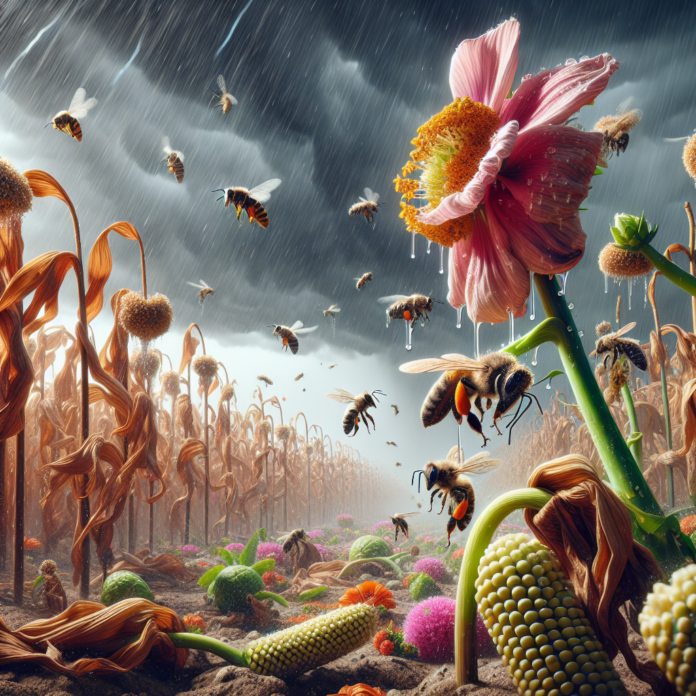Impact of Climate-Induced Extreme Events on Nectar Availability for Pollinators in Cross-Pollination Crops
“`html
Impact of Climate Change on Nectar Availability for Pollinators in Cross-Pollination Dependent Crops
The increasing frequency and intensity of extreme weather events due to climate change is having a profound effect on the availability of nectar in flowering plants, which is crucial for pollinators. This shift not only threatens the health of pollinator populations but also poses significant risks to cross-pollination-dependent crops that rely on these species for successful reproduction.
Understanding Nectar Dynamics in a Changing Climate
Nectar serves as a vital food source for various pollinators, including bees, butterflies, and other insects. Climate change can disrupt the timing and quantity of nectar production in plants. Factors such as temperature fluctuations, altered precipitation patterns, and extreme weather conditions can lead to mismatches between plant flowering times and pollinator activity, ultimately influencing the availability of nectar when pollinators are most active.
Consequences for Crop Pollination
Crops such as apples, blueberries, and almonds rely heavily on cross-pollination facilitated by insects. If nectar availability decreases or becomes inconsistent due to climate-related factors, pollinators may be less attracted to these crops during critical blooming periods. This can result in reduced fruit set and lower yields, impacting food supply and agricultural economies.
Mitigation and Adaptation Strategies
To mitigate the effects of climate change on nectar availability and pollinator health, several strategies can be implemented:
- Habitat Restoration: Enhancing and restoring habitats that support both native plants and pollinators can help ensure a consistent nectar supply.
- Climate-Resilient Crop Varieties: Developing and planting crop varieties that are more resilient to climate extremes may offer better yields even under changing conditions.
- Integrated Pest Management: Reducing reliance on harmful pesticides can help maintain healthy pollinator populations, ensuring they remain available for crop pollination.
- Research and Monitoring: Ongoing research into the effects of climate change on specific crops and their pollinators is essential to inform adaptive management practices.
Conclusion
As climate change continues to escalate, its impact on nectar availability poses a significant challenge to the sustainability of cross-pollination-dependent crops. By understanding these dynamics and implementing effective strategies, we can help protect pollinator populations and ensure agricultural productivity in the face of a changing climate.
“`


